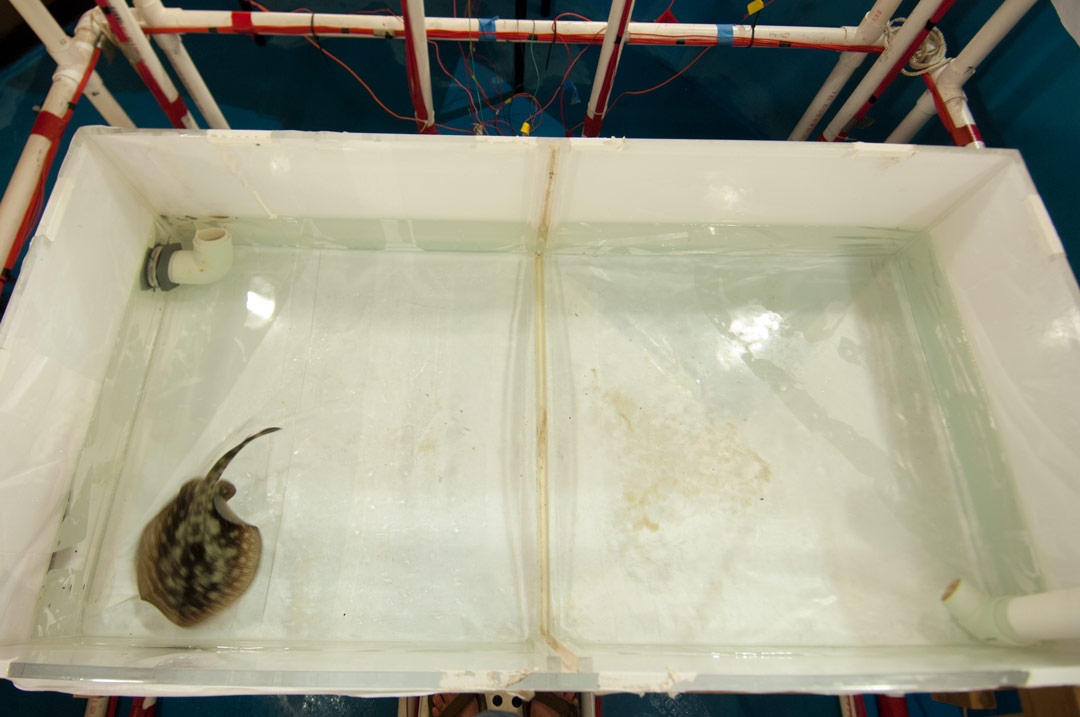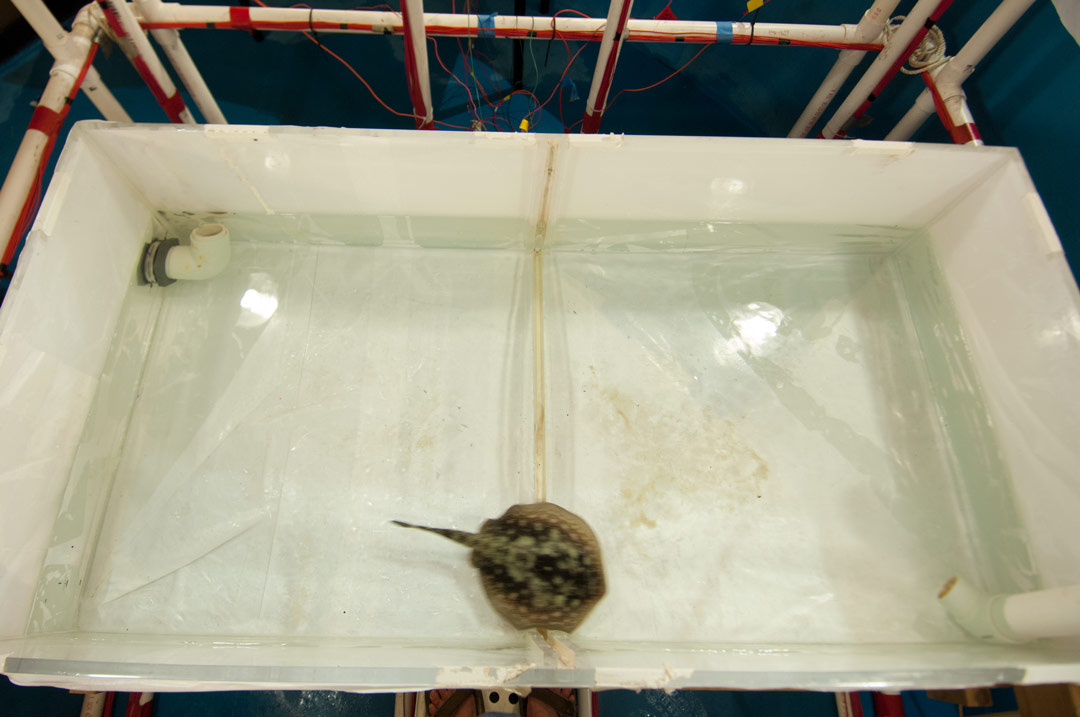Knowing one’s place in the world
Nobody has ever tested whether a shark or ray can derive a sense of location using geomagnetic cues. The series of experiments I am conducting sets out to determine whether the yellow stingray can detect changes in the strength and inclination angle of the geomagnetic field. These are cues that change predictably with latitude and they can be used by magneto-receptive animals to get a sense of their position on the globe. After spending a lot of time researching the relevant scientific literature, I designed a behavioural conditioning protocol that trains stingrays to associate magnetic stimuli with a mild aversive stimulus. The advantage of behavioural conditioning is that it demonstrates both sensory capability and the cognitive ability of a species to recognise and remember an association between two unrelated stimuli.

Experimental set up for testing the ability of the yellow stingray, Urobatis jamaicensis, to detect changes in magnetic field intensity and inclination angle. These stingrays were behaviorally conditioned to swim across the midline of the tank when they detected a change in the geomagnetic field. The Earth’s magnetic field changes predictably with latitude, and the intensity and angle of the field can be used like a map by some species to derive a sense of their location. Photo © Kyle Newton

Photo © Kyle Newton
I trained stingrays to swim across the tank when they experienced a change in either strength or inclination angle of the magnetic field. The videos show stingrays initially relaxing in the testing apparatus under normal conditions. When the red LED flashes, the magnetic stimulus is activated and the stingray swims across the tank in order to avoid the anticipated aversive stimulus. This shuttling behaviour demonstrates that the ray could detect the change in the strength (the dark stingray) or inclination angle (the light stingray) of the ambient geomagnetic field. Trained stingrays also demonstrated that they could distinguish between the two magnetic stimuli. These results support the idea that sharks and rays can detect the geomagnetic cues they need to get a sense of their location during migrations.
Experimental set up for testing the ability of the yellow stingray, Urobatis jamaicensis, to detect changes in magnetic field intensity and inclination angle. These stingrays were behaviorally conditioned to swim across the midline of the tank when they detected a change in the geomagnetic field. The Earth’s magnetic field changes predictably with latitude, and the intensity and angle of the field can be used like a map by some species to derive a sense of their location.
